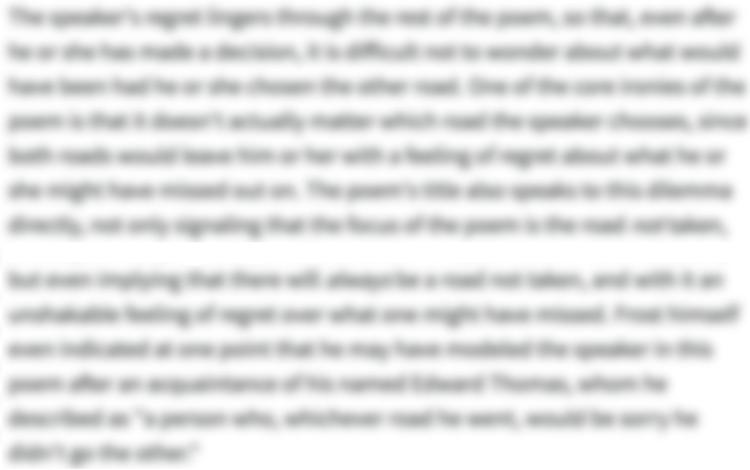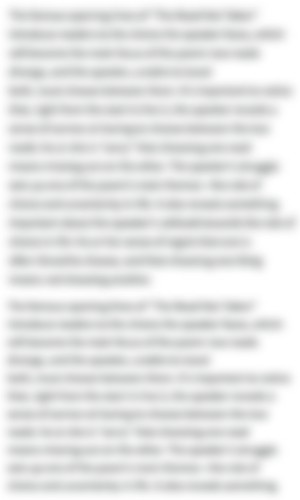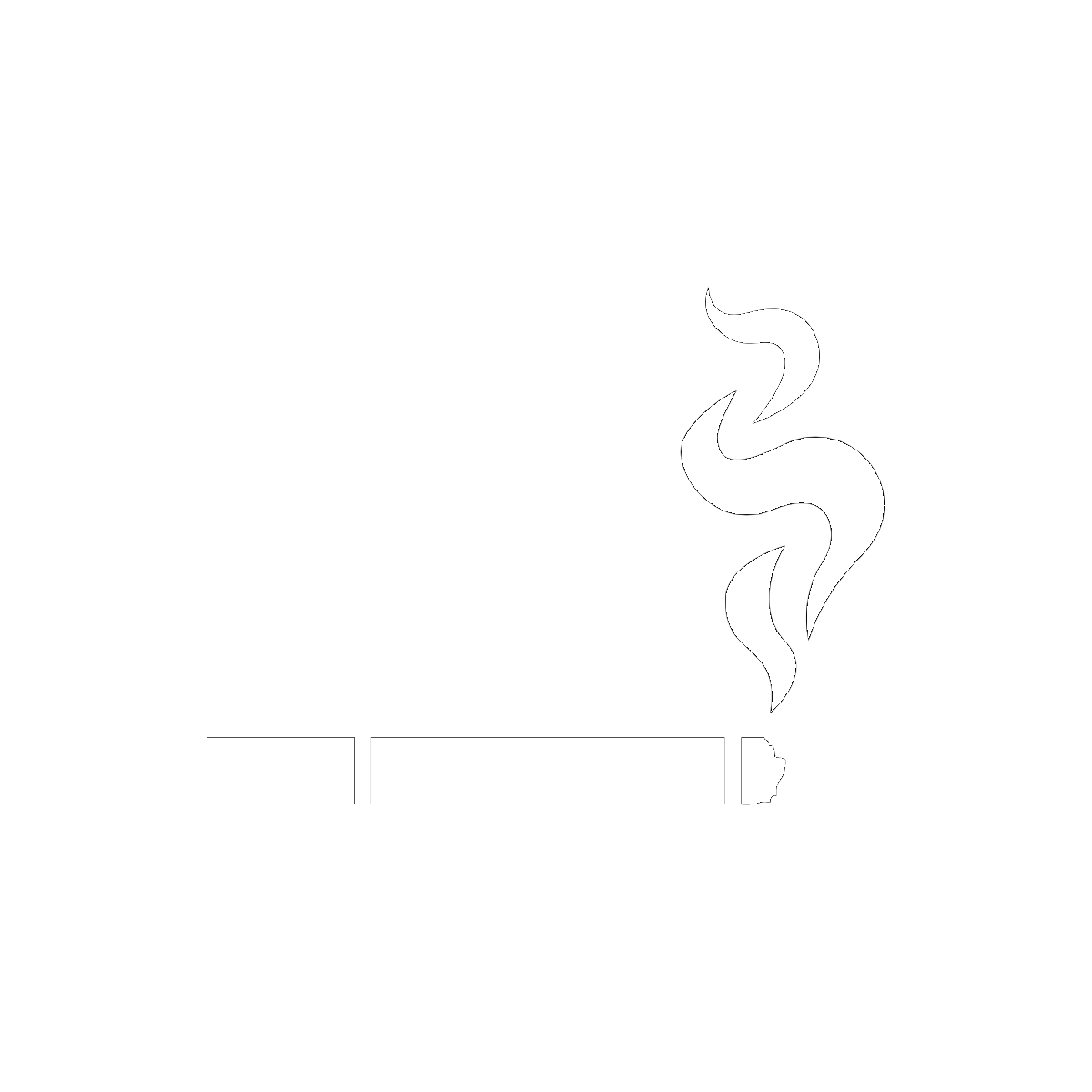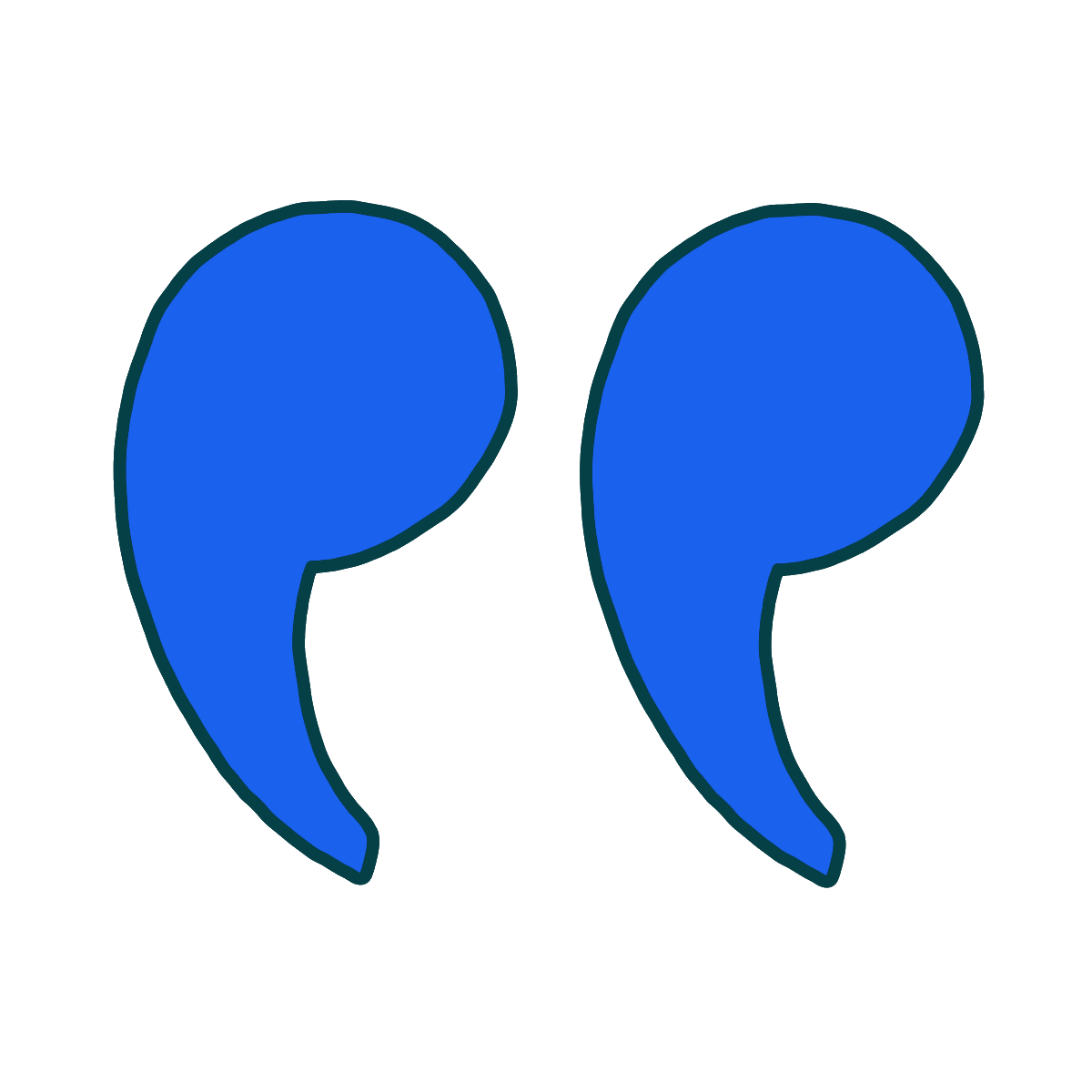-
“Telephone Conversation” Introduction
-
"Telephone Conversation" is a 1963 poem by the Nigerian writer Wole Soyinka that satires racism. The poem describes a phone call between a landlady and the speaker, who is black, about renting an apartment. The landlady is pleasant until she learns that the speaker is "African," at which point she demands to know how "light" or "dark" the speaker's skin is. In response, the speaker cleverly mocks the landlady’s ignorance and prejudice, demonstrating that characterizing people by their skin color diminishes their humanity.
-
-
“Telephone Conversation” Summary
-
It seemed like a good price and the location was fine. The landlady promised that she didn’t live in the building. The only thing left was to confess something important about myself. “Ma’am,” I warned the landlady, “I don’t want to waste a trip over there. Just so you know, I’m black.”
There was silence on the phone. In that silence, I could hear the tension between the landlady's prejudice and her manners. When she finally spoke, she sounded like the kind of person who'd be wearing a thick smear of lipstick and have a long, gold-coated cigarette holder in her mouth. Now I was stuck in a terrible position. “How dark are you?” she asked bluntly. It took me a second to realize that I hadn't misheard her. She repeated, “Are you light skinned or very dark skinned?” It was like she was asking me something as simple as choosing between Button A and Button B on the phone booth: to make a call or to return my coins. I could smell her rancid breath hiding beneath her polite speech.
I took stock of my surroundings: a red phone booth, a red mailbox, a red double-decker bus, its tires squelching through the hot asphalt. So this kind of thing actually happens! Feeling ashamed at my rude silence, I gave in and asked, utterly confused and shocked, for clarification.She was nice enough to swap around the order of the words in the question: “Are you dark-skinned,” she asked, “Or very light?” Finally it made sense. I replied: “Are you asking if my skin is the color of regular chocolate or milk chocolate?” Her confirmation was detached and formal, devastating in how thoughtless and impersonal she sounded. I quickly changed my tactic and chose an answer: “My skin color is West African sepia.” And then, as an afterthought, I added, “at least it is in my passport.” Then there was silence again, as she imagined all the possible colors I might be referring to. But then her true feelings took over and she spoke harshly into the phone.
“What is that?” she asked, admitting, “I don’t know what that is.” “It’s a brunette color," I told her. “That’s pretty dark, isn’t it?” she asked. “Not entirely,” I replied. “My face is brunette, but you should see the rest of my body, ma’am. My palms and the soles of my feet are the color of bleached blond hair. Unfortunately, ma’am, all the friction from sitting down has made my butt as black as a raven. Wait, hang on for a moment ma’am!” I said, sensing that she was about to slam down the phone. “Ma’am,” I begged, “don’t you want to see for yourself?”
-
-
“Telephone Conversation” Themes
-
Racism and the Complexity of Identity
“Telephone Conversation” is a poem that satirizes racism. The speaker, who is black, makes fun of a white landlady who won’t rent to the speaker until she knows whether the speaker’s skin is “dark” or “light.” In contrast to the landlady’s simple, reductive ideas about race, the speaker suggests that race and identity are complicated and multi-faceted. Judging a person based on their skin color, the poem argues, is thus ignorant, illogical, and dehumanizing.
At first the landlady seems ready to move forward with renting to the speaker, even “swearing” that “she lived / Off premises.” She can’t detect the speaker’s race through the phone, a fact that emphasizes a) that the speaker’s identity is comprised of more than his or her race and b) that skin color is irrelevant to the speaker’s suitability as a tenant.
But when the speaker then makes a “self-confession” about being “African,” the conversation abruptly shifts to a discussion of skin tone. Note that the speaker is being ironic in the use of “confession” here, a word typically associated with the revelation of something criminal, to undermine the racist notion that being “African” is a bad thing. Clearly, the speaker understands how black people’s housing prospects are unfairly limited by a racist society.
Indeed, in response to this “confession” the landlady asks whether the speaker’s skin is “light” or dark”—a question so absurd that the speaker briefly wonders if he or she has “misheard.” The landlady is playing into the ignorant idea that black people with lighter skin (and, as such, whose skin is closer in appearance to that of white people) are superior to those with darker skin. The key thing that matters to her, then, is how black the speaker looks. Instead of asking what the speaker does professionally, what the speaker's habits are—that is, instead of treating the speaker like an actual human being and potential tenant—the landlady reduces the speaker to a single attribute: skin color. Racism, the poem thus makes clear, is inherently reductive and dehumanizing.
As such, the speaker refuses to answer the landlady’s question directly, instead offering a series of clever replies that reveal the landlady’s question to be not just offensive but also utterly illogical. For instance, the speaker describes him or herself as “West African sepia” (a kind of reddish-brown hue seen in old monochromatic photos) in the speaker's passport, a joke that goes right over the slow-witted landlady’s head; essentially this is like saying, “Well, in a black and white photograph my skin is gray.”
The speaker also notes that the human body isn’t just one color: the speaker's face is “brunette,” but the speaker's palms and foot soles are “peroxide blonde.” The speaker is being deliberately tongue-in-cheek in the comparisons here, but the point is that race and identity are far too complex to be reduced to a simple, binary choice between “dark” or “light,” between “Button B” or “Button A.”
The speaker doesn’t just criticize the landlady’s blatant racism, then, but also critiques the way she thinks about race itself. In doing so, the speaker refuses to let the complexity of human identity be reduced by the ignorant choice that the landlady offers. For all the speaker’s ingenuity, however, the poem does not end on a triumphant note. As the poem closes, the landlady is about to hang up on the speaker—suggesting that, as a white person, she still holds the power in society to effectively silence the black speaker.
Where this theme appears in the poem:- Lines 1-35
-
-
Line-by-Line Explanation & Analysis of “Telephone Conversation”
-
Lines 1-5
The price seemed ...
... journey--I am African."The poem begins with the speaker talking on the phone with a potential landlady, hoping to rent some sort of housing—likely an apartment or a room in a boarding house. The accommodation seems fine: it’s not too expensive, the location isn’t bad, and the landlady doesn’t live on the premises. There’s just one problem: the speaker is “African.”
The speaker refers to this moment as a “self-confession,” with the speaker's blackness being something that the landlady must be "warned" about. This language makes it sound as if there's something shameful or wrong about being “African,” but the speaker is being deliberately tongue-in-cheek here. The speaker isn’t personally ashamed of being “African”; rather, the speaker seems fully aware of society's racial prejudices and worries about what the landlady will think. The speaker confesses to being “African” to avoid taking a trip to see the rental only to be turned down simply for being black.
These opening lines also establish the poem's form. It's written in a distinctly casual tone, with many caesuras breaking up lines of various lengths. The form is free verse, meaning there isn't any overarching rhyme scheme or meter; instead, the poem flows along like a conversation–which, in a way, is exactly what it is.
It's also worth noting that until line 4, all the lines are enjambed. That gives the poem a kind of anxious speed, as though the speaker were rushing through the preliminaries, trying to get straight to the most difficult and essential point. Line 5 is then strongly end-stopped. This end-stop conveys certainty and self-assurance, especially after all the enjambed lines that precede it.
-
Lines 6-9
Silence. Silenced transmission ...
... Cigarette-holder pipped.

Unlock all 464 words of this analysis of Lines 6-9 of “Telephone Conversation,” and get the Line-by-Line Analysis for every poem we cover.
Plus so much more...
Get LitCharts A+ -
Lines 9-11
Caught I was ...
... B, Button A. -
Lines 11-14
Stench ...
... real! -
Lines 14-18
Shamed ...
... OR VERY LIGHT?" -
Lines 18-23
Revelation came. ...
... in my passport." -
Lines 23-26
Silence for spectroscopic ...
... WHAT THAT IS." -
Lines 26-30
"Like brunette." ...
... a peroxide blond. -
Lines 30-35
Friction, caused-- ...
... See for yourself?"
-
-
“Telephone Conversation” Symbols
-
Cigarette-holder
The speaker describes the landlady's voice by comparing it to a cigarette-holder, which acts as a symbol of wealth and privilege. A cigarette-holder is a long, narrow pipe that holds a lit cigarette at one end; on the other end, it has a mouthpiece so that the smoker can inhale. It’s a very elegant and slightly old-fashioned device, the sort of thing one might expect an aristocratic lady to use. And the speaker notes that this cigarette-holder is “gold-rolled”: in other words, it's gold-plated or painted gold. That only makes it seem even fancier.
The speaker uses the cigarette-holder as part of a metaphor to give a rich picture of the landlady's voice and the way it comes across to the speaker. It is an aristocratic voice, a voice whose accent and pronunciation expresses power, money, and social prestige.
Where this symbol appears in the poem:- Line 9: “Cigarette-holder”
-
Peroxide Blond
The speaker's “palms” and foot “soles” are described as “peroxide blond,” a color referring to very bright blond hair that has been bleached. Broadly, this might symbolize whiteness, since blond hair is often associated with white people. More specifically, it suggests femininity, since most "peroxide blonds" when Soyinka wrote the poem in the 1960s were women (think of perhaps the most famous "peroxide blond" of all, Marilyn Monroe). In invoking this hair color, the speaker implies that racial identity is much more complicated than the landlady might like to admit. The speaker's skin is made up of many colors, and even contains a potent symbol of whiteness.
Where this symbol appears in the poem:- Line 30: “peroxide blond”
-
Raven black
In line 32, the speaker tells the landlady, "my bottom [is] raven black." In other words, the speaker's behind is very dark in color, like a raven—a bird with jet black feathers. Ravens are traditionally associated with evil. (Think, for instance, of the ominous raven that appears in Edgar Allen Poe’s poem “The Raven.”) In calling to mind the bird and its symbolic associations, the speaker's "bottom" becomes connected to something frightening, even evil. This is, of course, a joke: the speaker is playing on the landlady’s racism and her prejudiced fear of black people. The speaker is mocking that fear: saying that the most evil and frightening thing about the speaker is the speaker's butt.
Where this symbol appears in the poem:- Line 32: “raven black”
-
-
“Telephone Conversation” Poetic Devices & Figurative Language
-
End-Stopped Line
“Telephone Conversation” uses a lot of enjambment: the speaker’s anxiety and discomfort express themselves via sentences that spill from line to line as the speaker tries to get through this racist telephone conversation. The poem's end-stops, by contrast, tend to appear in the speaker’s moments of self-assurance and confidence. Look, for instance, at the poem’s end-stop in line 5:
“I hate a wasted journey—I am African.”
This pronouncement is strong and unequivocal. It feels as though the speaker’s identity as an “African” offers a point of certainty, even comfort, as the speaker negotiates the difficulties of being an immigrant in a majority white country.
Similarly, the end-stop in line 12 conveys the depths of the speaker’s disgust with the landlady and her racism:
... Stench
Of rancid breath of public hide-and-speak.In these lines, the speaker describes the landlady as a hypocrite. She doesn’t wear her racism on her sleeve; instead, the speaker says, using a pun on the phrase “hide and seek,” she engages in “hide-and-speak.” The end-stop underlines the force of the speaker’s judgment: this is something the speaker believes deeply and is willing to insist on. Although the speaker doesn’t use end-stop often, the speaker seems to turn to it to emphasize key moments in the poem, moments when the confusion and difficulty of this conversation give way to self-assurance and certainty.
Where end-stopped line appears in the poem:- Line 4: “warned,”
- Line 5: “African."”
- Line 7: “came,”
- Line 9: “foully.”
- Line 12: “hide-and-speak.”
- Line 16: “simplification.”
- Line 17: “ emphasis--”
- Line 18: “came.”
- Line 19: “chocolate?"”
- Line 21: “adjusted,”
- Line 22: “afterthought,”
- Line 26: “brunette."”
- Line 27: “altogether.”
- Line 30: “caused--”
- Line 35: “yourself?"”
-
Enjambment


Unlock all 382 words of this analysis of Enjambment in “Telephone Conversation,” and get the poetic device analyses for every poem we cover.
Plus so much more...
Get LitCharts A+ -
Caesura
-
Alliteration
-
Assonance
-
Consonance
-
Pun
-
Parataxis
-
Repetition
-
Metaphor
-
Simile
-
-
“Telephone Conversation” Vocabulary
Select any word below to get its definition in the context of the poem. The words are listed in the order in which they appear in the poem.
- Indifferent
- Premises
- Self-confession
- Transmission
- Pressurized
- Gold-rolled Cigarette Holder
- Pipped
- Foully
- Button B, Button A:
- Hide-and-Speak
- Pillar Box
- Double-Tiered Omnibus
- Squelching
- Dumbfounded
- Impersonality
- Wave-length
- Sepia
- Spectroscopic
- Mouthpiece
- Peroxide Blond
- Raven Black
- Thunderclap
Indifferent-
(Location in poem: Line 2: “Indifferent”)
Good enough. The apartment isn’t in a great location, but it’s not bad either.
-
Form, Meter, & Rhyme Scheme of “Telephone Conversation”
-
Form
“Telephone Conversation” is written in a single, 35-line stanza of free verse. That means it doesn’t have a defined meter or rhyme scheme. The poem feels conversational rather than tightly controlled, and is also very unpredictable. It's not clear to the reader where this conversation will go next. The speaker also uses sharp enjambments to create suspense and surprise, alongside short phrases like “Red booth. Red pillar box.” that create a punchy, staccato rhythm. This rhythm mimics the telephone conversation the poem describes, with all its short, curt exchanges and its awkward pauses. Even though the poem doesn’t use meter and rhyme, then, its form still does important work, capturing the speaker's feelings—and the dynamics of the telephone conversation itself.
-
Meter
t“Telephone Conversation” is written in free verse, which means that it doesn’t follow a set meter. Instead of the steady, predictable rhythms of a metrical poem, the rhythms of "Telephone Conversation" vary much like they would in an actual conversation. This keeps the poem feeling surprising and unpredictable throughout, the reader never quite sure where the speaker will go next while formulating a response to the landlady's deeply inappropriate and racist question.
-
Rhyme Scheme
“Telephone Conversation” is written in free verse: it doesn’t have a regular rhyme scheme. As noted in our discussions of form and meter, this keeps the poem feeling unpredictable; the reader doesn't know where this uncomfortable conversation is going to go next.
The closest thing to a rhyme comes in lines 28-29, which end with the words “see” and “feet.” The /ee/ sounds in “see” and “feet” are assonant. That binds them together, creating an effect which is almost like rhyme, but the /t/ sound at the end of “feet” keeps this from being a perfect rhyme.
The lack of rhyme in the poem is potentially significant on another level. Rhyme creates links between words. When a reader encounters two words that mean different things but sound the same, they start to think about the connections between them, the underlying harmony that binds those things together. But there isn’t any harmony between the speaker and the landlady—or, at least, her racism keeps them from finding it. The poem’s refusal to use rhyme, even occasionally, thus mimics the divide between the speaker and the landlady.
-
-
“Telephone Conversation” Speaker
-
The speaker of “Telephone Conversation” is an unnamed person from West Africa. This person is living in a majority white country, implied to be England (where red phone booths, "pillar boxes," and double decker buses are common). The speaker needs to rent an apartment in this country, but that's more or less all readers learn about the speaker (though they do get a funny and satirical account of the color of different parts of the speaker's body). The fact that readers never learn anything substantial about the speaker—where the speaker works, what the speaker likes to do, etc.—is part of the point. The speaker doesn’t reveal any of this personal information during the phone conversation with the landlady because she doesn’t ask the speaker to do so. She’s only interested in the color of the speaker's skin. By avoiding revealing anything else about the speaker, the poem illustrates how racism reduces and dehumanizes people. It cuts away everything that’s human and vibrant about the speaker, until only skin color is left.
-
-
“Telephone Conversation” Setting
-
“Telephone Conversation” is set in an unnamed country, implied to be England (Soyinka studied in Leeds, a city in the north of England, as a young man, and the speaker mentions a "pillar box" in line 13—a kind of mail box that's used throughout the United Kingdom). Specifically, it takes place in a red telephone booth, during a phone call between the speaker and a landlady from whom the speaker wants to rent an apartment or room of some sort.
The speaker is careful not to provide too much detail, however, and never positively identifies which country the poem is set in. This is important: even though the poem zeroes in on a single phone call—a single racist incident—it reflects more broadly on the challenges that black people face in majority white countries like England. In other words, the poem is saying that incidents like this can and do happen to black people in a wide range of settings.
-
-
Literary and Historical Context of “Telephone Conversation”
Literary Context
Wole Soyinka is an important figure in post-colonial literature. Colonialism was a political system that developed in the 19th century, in which European countries like England and Belgium ruled over countries in Africa, Asia, and elsewhere around the globe. When Soyinka was a young man in the 1950s and 1960s, this system began to come apart: countries like Nigeria, where he was born, won their independence. As these countries struggled against their colonial rulers, a group of artists and intellectuals arose, led by figures like Aimé Césaire, Franz Fanon, and Soyinka himself. They bitterly opposed the Europeans rulers who controlled their countries, and they worked to develop independent literary traditions: new kinds of poetry that testified to the complicated and difficult histories their countries had endured under colonialism. These poets and artists hoped to use literature to build resistance to colonial rule—and to create cultural pride among their countrymen.
Post-colonial artists and writers also hoped to bring attention to the injustices—large and small—they had suffered at the hands of their colonizers. “Telephone Conversation” contributes to this broader project. Even though it describes a relatively small injustice, it testifies to the difficult conditions that many artists and intellectuals like Soyinka faced while studying and working in Western countries. It documents the small, persistent, and dispiriting difficulties that colonized people faced in dealing with their colonizers, and the ways in which such difficulties diminish and dehumanize them. But, with its biting wit and linguistic virtuosity, the poem also makes a strong case for the resilience and brilliance of the people who endured such treatment—and their capacity to passionately resist it. The new traditions originated by post-colonial writers became some of the most vibrant and important literature of the 20th century. In recognition of this vibrancy, and of his crucial contributions to it, Soyinka was awarded the Nobel Prize in Literature in 1986.
Historical Context
Wole Soyinka was born in Nigeria in the 1930s and studied in England in the 1950s. He became one of the most important figures in African literature during a pivotal moment in that continent’s history. Since the 19th century, most African countries had been ruled by Europeans under brutal and exploitative colonialism. After the end of World War II, many African countries fought to free themselves from colonial rule. In some cases, these struggles were peaceful. In others, they involved violent conflict. And even when nations won independence, the struggle wasn’t over. Some countries slid into repressive dictatorships.
Soyinka’s home country, Nigeria, was under British rule until 1960. It had a troubled history through the rest of the 20th century, with periods of democratic rule interrupted by a civil war between 1967-1970 and periods of military dictatorship thereafter. (In recent years, the country’s fortunes have improved: it has enjoyed a period of democratic rule that dates back to 1999.)
African artists and intellectuals played important roles in these struggles: they bitterly opposed colonialism and, later, extended that opposition to the dictators who sprang up after colonial rule. Some writers, like Soyinka, even participated directly in these struggles. Beginning in 1966, he was imprisoned for 22 months for conspiring against the military dictator of Nigeria. He was finally freed when the Nigerian civil war came to a close. In 1971, concerned about the political situation in Nigeria, Soyinka fled the country and lived for many years in exile, producing poems and plays that passionately protested both political conditions in Nigeria and racism more broadly. Soyinka's poetry and plays are thus inseparable from their historical context. They not only comment on racism, colonialism, and dictatorship; they actively seek to intervene in the historical struggles around these issues, and to use literature to make the world more just and more livable.
-
More “Telephone Conversation” Resources
-
External Resources
-
‘There’s One Humanity or There Isn’t’: A Conversation — A conversation between scholar Henry Louis Gates Jr. and the poet from the New York Review of Books.
-
Wole Soyinka's Biography — A biography of Wole Soyinka from the Nobel Foundation.
-
Out of Africa: A Conversation with Wole Soyinka — Alessandra Di Maio interviews Wole Soyinka.
-
Post-Colonial Literature — An introduction to post-colonial literature from Oxford Bibliographies.
-
Wole Soyinka Reads "Telephone Conversation" — Listen to poet read his poem aloud.
-
-












